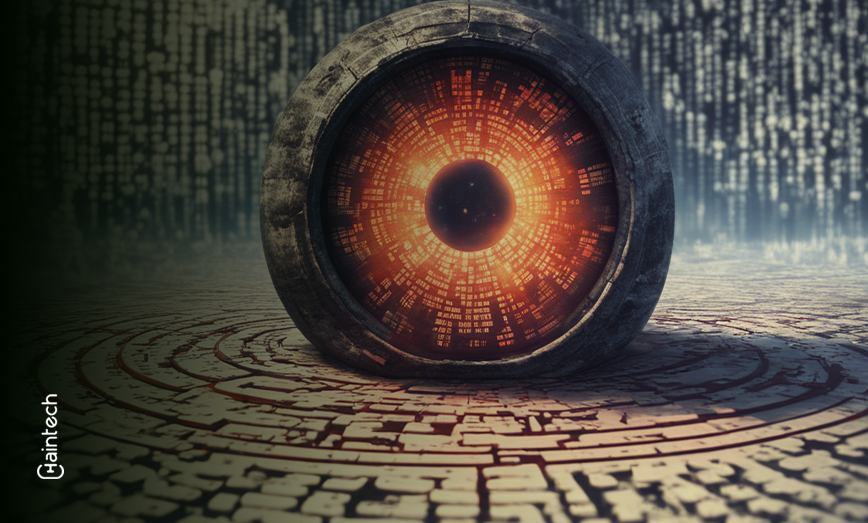Year 1971: Unveiling Creeper – The First Computer Virus

Introduction
In the nascent years of computer science, where the digital landscape was uncharted and ARPANET was but a humble experiment, emerged a groundbreaking innovation that would set the tone for the future of cybersecurity. This is the story of Creeper, the first computer virus to traverse the internet—an entity whose genesis was rooted not in malice but in the pursuit of understanding the capabilities of computer programs.
The year was 1971, a period when mainframe computers symbolized the zenith of technological advancement, and the term “internet” was still in its infancy. Within this dynamic setting, Bob Thomas, a programmer at BBN Technologies, undertook a seminal experiment that would redefine the contours of digital exploration. The result was Creeper, a virus that would etch its name into the historical narrative of computing, marking the dawn of a new era.
As we delve into this intriguing chapter, we unravel the intricacies of Creeper’s conception, its interactions with DEC PDP-10 computers running the TENEX operating system, and the fascinating conflict that ensued with the creation of Reaper—the first antivirus software. Beyond the technicalities, this exploration serves as a gateway to understanding the ethos of early digital experimentation, leaving an indelible mark on the evolution of cybersecurity.
Inception of the Creeper Virus
In 1971, the digital world witnessed the inception of the Creeper Virus, a groundbreaking creation by Bob Thomas at BBN. Unleashed upon DEC PDP-10 computers operating TENEX, Creeper embarked on its journey as an experimental self-replicating program, leaving its mark with the whimsical challenge, “I’m the creeper, catch me if you can!” splashed across teletype screens. Despite its mischievous nature, Creeper, named after a character from the Scooby-Doo cartoon show, held no malicious intent.
As for the infiltration strategy, Creeper found its entry point into the network by targeting Digital Equipment Corporation (DEC) computers connected to the ARPANET. Leveraging ARPANET’s packet switching capability, Creeper swiftly propagated itself, showcasing the early intricacies of cyber propagation.
Despite its non-malicious essence, Creeper did leave its mark on the network, displaying the cheeky message, “I’M THE CREEPER: CATCH ME IF YOU CAN.” Its mischievous tendencies extended further, introducing a playful poem onto infected computers every 50th boot – the infamous Elk Cloner. This poem, embodying the persona of a program with a personality, humorously warned of its intent to infiltrate disks, chips, and modify RAM.
ELK CLONER:
THE PROGRAM WITH A PERSONALITY
IT WILL GET ON ALL YOUR DISKS
IT WILL INFILTRATE YOUR CHIPS
YES, IT’S CLONER!
IT WILL STICK TO YOU LIKE GLUE
IT WILL MODIFY RAM TOO
SEND IN THE CLONER!
How Did the Creeper Virus Work?
The Creeper Virus worked in a unique way, making a significant impact on the early days of computer viruses. Let’s take a closer look at how Creeper jumped from one computer to another.
1. File Printing and Abrupt Halting
The Creeper Virus commenced its operation by causing infected computers to print a file. However, this process was not an end in itself; rather, it served as the precursor to the virus’s distinctive behavior. After printing a file, the virus abruptly halted its activities on the host computer.
2. Locating Another Tenex System
Following the abrupt pause, Creeper initiated the next phase of its propagation. It actively sought out another Tenex system within the network. The goal was not to infect the existing system further but to leap to a new host.
3. Connection Establishment and Download
Once Creeper identified a new Tenex system, it opened a connection to that system. Subsequently, the virus downloaded itself, along with its files and external states, onto the new host. This action showcased the pioneering aspect of Creeper, representing one of the earliest instances of automatic movement of applications between computers.
4. Transfer and Execution on the New System
Having successfully downloaded its components to the new system, Creeper commenced its execution on the fresh host. The result was the display of its default message on the infected system’s screen: “I’m the creeper, catch me if you can!”
5. Limited Replication and Network Movement
Unlike contemporary computer worms that proliferate by installing multiple instances on various targets, Creeper adopted a more nomadic approach. Rather than replicating itself extensively, it shuffled between systems, attempting to remove itself from previous hosts as it propagated forward. This distinctive characteristic set Creeper apart, contributing to its historical significance.
6. Legacy in McROSS
The innovative techniques employed by Creeper didn’t merely conclude with its mischievous exploits. The methods it introduced were later utilized in the development of the Multi-computer Route Oriented Simulation System (McROSS), an air traffic simulator. This application allowed parts of the simulation to move across the network, showcasing the unintended yet impactful legacy of Creeper.
Countering Creeper
In response to the emergence of the Creeper Virus, Ray Tomlinson introduced another program named “Reaper.” Serving as the first antivirus software, Reaper swiftly emerged to bring an end to the digital mischief caused by Creeper. Operating by navigating through the ARPANET, Reaper replicated itself, actively seeking and logging out copies of the Creeper Virus. Tomlinson’s iteration of the antivirus program can be seen as an enhanced version of Bob Thomas’s original creation.
This clash between Creeper and Reaper, while pivotal in the realm of early computer security, went beyond mere digital combat. It laid the groundwork for the development of the Core War programming game, an arena where programmers engaged in battles of wits, creating viruses and antivirus programs in a simulated digital battleground.
Closing Thoughts
Creeper, with its playful demeanor, invites us to reflect on the early days of the digital age. As we traverse the intricate web of ones and zeros, let Creeper be a reminder that even in the world of cybersecurity, a touch of curiosity and innovation can pave the way for remarkable discoveries. So, in the spirit of the digital pioneers, let’s continue our journey, ever-curious and prepared for the challenges that lie ahead. Happy exploring!









